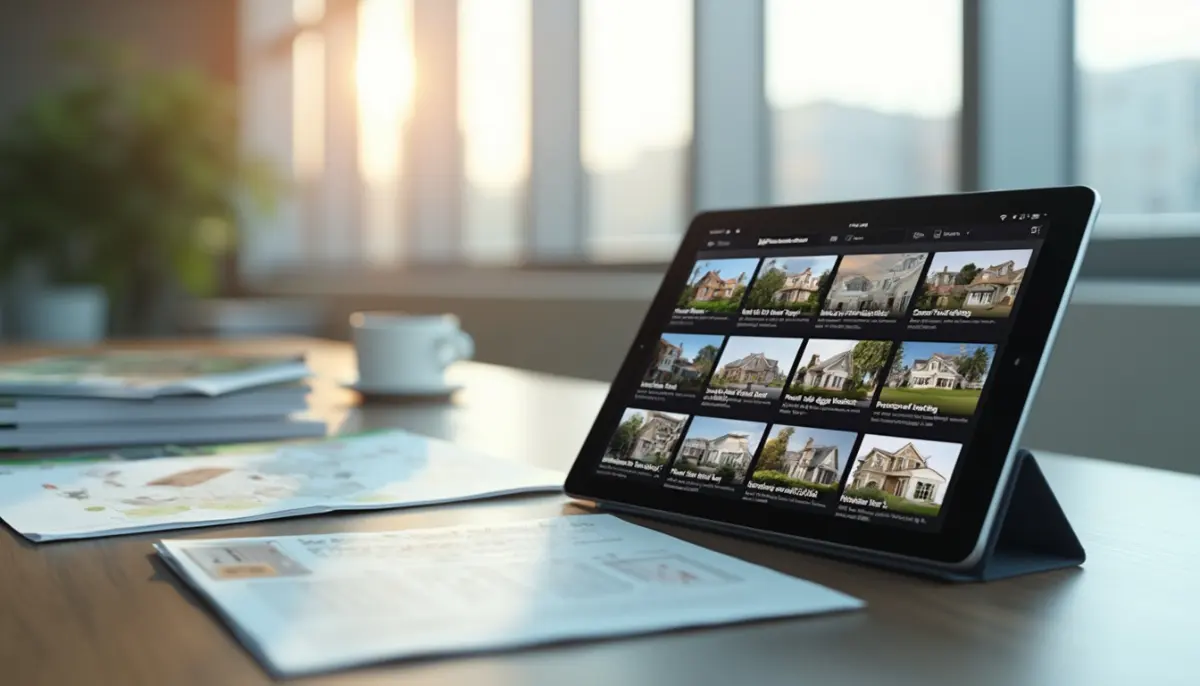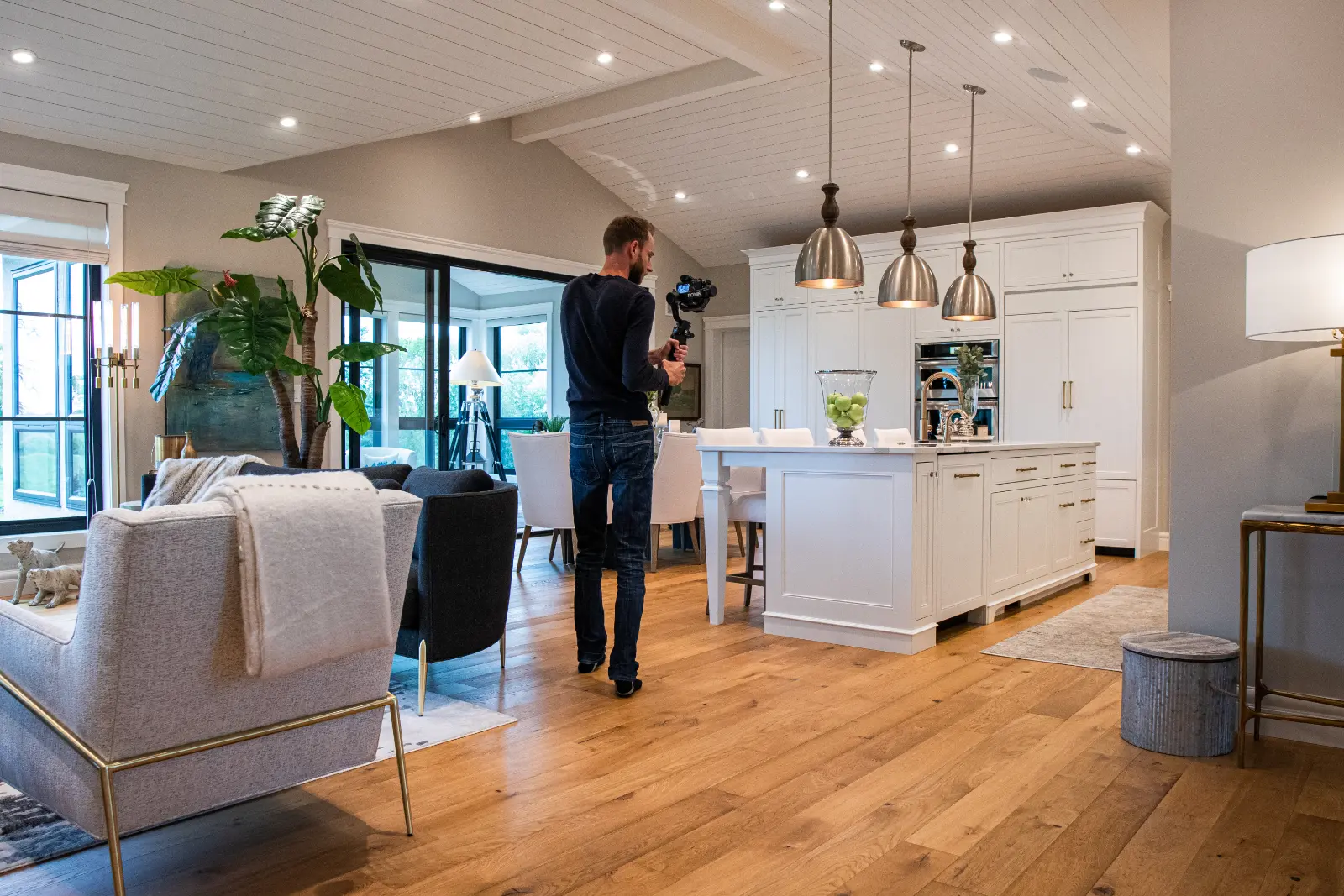Contents
Can Short Real Estate Videos Work as Blog Content?
Short, 20-30 second real estate videos have become a popular tool for grabbing attention, but can they also be transformed into valuable blog content? The answer is both yes and no.
On their own, these short clips don’t provide enough material for a full blog post that can rank well on search engines. Once transcribed, they may only give you a couple of paragraphs—not nearly enough for effective SEO. However, with a strategic approach, you can still turn these videos into something more substantial and SEO-friendly.
In this post, we’ll explore creative ways to repurpose short real estate videos into blog content that engages your audience and boosts your search engine rankings.

Why Short Real Estate Videos Alone Won’t Cut It for Blog Posts
Short videos are great for delivering quick insights—whether it’s a quick tip about the real estate market or a snippet showcasing a property. But here’s the issue: they don’t always provide enough substance to create a blog post that performs well in search results.
To rank well in search engines like Google, longer blog posts are more effective because they allow you to:
- Answer a variety of questions: Homebuyers, sellers, and even fellow agents are looking for detailed information. Longer posts give you the space to fully explore a topic.
- Use relevant real estate keywords naturally: SEO isn’t about cramming in keywords—it’s about using them in a way that feels organic. More content means more opportunities to incorporate those valuable keywords.
- Keep readers on your site longer: A longer, well-written blog post increases the time people spend on your page, signaling to search engines that your content is valuable.
Simply put, while short videos are great for social media, turning them into competitive blog posts requires additional content to make them worth reading (and ranking).

Option 1: Expanding Short Real Estate Videos into Comprehensive Posts
One of the most effective ways to use short real estate videos is to expand on the topic they cover. Think of the video as the introduction or summary, and then build out the rest of the blog post with related information that your audience—whether they’re buyers, sellers, or other agents—will find valuable.
Here’s how to do it:
- Transcribe the video: Start by using a transcription (I personally use Transkriptor, it’s inexpensive and has lots of great features. If you want a good free tool there is also YouTube Transcript) tool to get the basic content of the video. Clean it up, and use it as the foundation for your post.
- Add depth with relevant information: Ask yourself what additional value you can offer your readers. Here are a few ideas for expanding the post:
- Offer more in-depth advice on the video’s topic.
- Provide real estate market insights or trends.
- Share tips or strategies that agents can apply in their own businesses.
- Address common questions or concerns from clients.
- Organize with SEO-friendly headers: Structure the blog post with clear headers (H2, H3) that make it easy for both readers and search engines to follow.
- Link to other valuable content: This is a great opportunity to link to other blog posts or pages on your site that provide additional value. For example, if your video mentions buyer negotiation strategies, link to a post that dives deeper into negotiation techniques.
Example for Real Estate Agents
Let’s say your video covers how agents can help clients prepare a home for sale. You could turn this into a comprehensive post by including:
- Best practices for staging a home.
- How to price a home competitively in today’s market.
- Insights into what buyers are looking for in your local area.
- Tips for handling multiple offers and closing the deal.
By expanding on these points, you’ll create a post that not only helps real estate agents succeed but also ranks well by offering valuable, in-depth content.

Option 2: Combining Multiple Short Videos into a Themed Blog Post
Another effective way to use short real estate videos is to group them together into one cohesive blog post. This approach works well if your videos share a common theme, such as agent success stories or tips for growing a real estate business. By combining the videos, you create a post that can cover multiple angles on a single topic while making the most of the short clips.
Here’s how to make it work:
- Identify a unifying theme: The key is to find a common thread that runs through the videos. For real estate agents, themes could be:
- Building a successful real estate career.
- How to market yourself as a top agent.
- Real estate strategies to grow your business.
- Write an introduction: Start by giving readers an overview of the theme. This is where you explain what the post will cover and why it’s valuable to your audience. For example, “In this post, we’ll explore the top strategies agents can use to elevate their careers, from building a personal brand to mastering the art of negotiation.”
- Create individual sections for each video: Under each section, embed the video and expand on the key takeaways. This allows you to dive deeper into each topic. For example:
- Video 1: How to Build Your Personal Brand as a Real Estate Agent
Expand by discussing the importance of branding, tips for creating a strong online presence, and examples of successful agents who have mastered their personal brand. - Video 2: Negotiation Strategies for Real Estate Agents
In this section, break down essential negotiation techniques, how to handle tough client situations, and the importance of setting clear expectations with buyers and sellers. - Video 3: The Power of Networking in Real Estate
Share insights on how agents can build a strong network, the importance of maintaining relationships with clients, and ways to leverage social media for networking.
- Video 1: How to Build Your Personal Brand as a Real Estate Agent
- Provide a conclusion: Wrap up by summarizing the key points from each section, reinforcing the theme, and encouraging readers to apply these strategies in their real estate careers. You can also include a call to action, such as downloading a guide or contacting you for more resources.
SEO Benefits of This Approach
By combining multiple videos into one blog post, you create content that:
- Covers a broader range of keywords: Each video and its corresponding section can target different real estate keywords, increasing the chances of ranking for multiple terms.
- Provides more value in a single post: A longer post with multiple sections gives readers more to engage with, keeping them on the page longer and improving your site’s overall SEO performance.
- Appeals to agents at different stages: Whether a reader is a new agent or an experienced one, a themed post with multiple topics can offer something for everyone.
This strategy allows you to get more mileage out of your short videos while also creating blog content that’s rich in value and optimized for SEO.

Supplementary Content Ideas for Both Options
To make your blog posts even more valuable to real estate agents, adding supplementary content is key. This is where you can really build out your post, offering insights and resources that go beyond what’s in the videos. Here are a few ways to supplement your content effectively:
- Incorporate FAQs
One of the easiest ways to expand your blog is by including answers to frequently asked questions. Think about common questions agents might have related to the video topic, such as:
- What are the first steps to becoming a top-producing agent?
- How can I improve my negotiation skills as a real estate agent?
- What tools do I need to build my personal brand?
By answering these questions, you not only add value to your post but also improve your chances of ranking for these specific search queries. Additionally, they have a better chance of getting picked up as a Google Featured Snippet which is a great way to get clicks.
- Add Real Estate Industry Trends
Agents are always looking for the latest trends that can help them stay competitive. Supplement your blog post with up-to-date industry insights. For example, if your video touches on digital marketing for agents, you could include:
- The rise of virtual home tours and how agents can leverage them.
- Data on how social media is driving client engagement in the real estate market.
- New technologies or platforms that are helping agents close more deals.
This type of content shows that you’re staying current with industry changes, which is particularly important for SEO and for keeping your audience engaged.
- Include Client Success Stories
Real estate agents love hearing real-world examples of what works. If your videos focus on how to grow a real estate business, why not supplement the post with a few short success stories? You could write about:
- An agent who built their brand using the strategies you discuss in the video.
- A successful negotiation that followed the tips you’ve shared.
- How a networking strategy led to a major sale.
These stories make the content relatable and offer practical examples agents can apply in their own careers.
- Use Visuals Like Charts or Graphs
Adding visuals not only breaks up the text but also enhances understanding. For example, if you’re discussing market trends, include a simple graph showing how home sales have increased or decreased over time. If your post is about marketing tactics, a flowchart of a real estate marketing funnel can be very effective.
Visual content improves engagement and makes your post more shareable, which can lead to increased backlinks and higher SEO rankings.
- Internal and External Links
Don’t forget to link to other valuable content—both from your site and reputable external sources. For real estate agents, you could:
- Link to a page on your site that covers in-depth negotiation tactics.
- Provide an external link to a guide on the latest real estate tools for agents.
- Reference a reliable source for local market trends.
This not only enhances the user experience but also boosts your SEO by connecting related content.

Optimizing for SEO and User Experience
Now that you’ve expanded your real estate videos into blog content, the next step is to make sure it’s optimized for search engines and provides a smooth experience for your readers—primarily real estate agents. Here’s how to balance SEO with user experience, specifically for the real estate industry:
- Use a Clear Header Structure
Real estate agents looking for advice or strategies often skim posts for relevant sections. A clear header structure helps both your readers and search engines follow the flow of your content.
- H1: Your Main Title
Focus your title on topics real estate agents are searching for, such as “Real Estate Marketing Tips” or “How Agents Can Grow Their Business.” Include relevant terms like “real estate” or “real estate agent” to target specific keywords. - H2: Main Sections
For each core topic in your blog post, use H2 headings. For example, sections like “How to Build Your Real Estate Brand” or “Negotiation Strategies for Agents” are directly relevant to agents and make the post easy to navigate. - H3: Subsections
When you go into more detail, use H3 headers. For example, under “Real Estate Marketing,” you might have subsections like “Social Media Marketing for Agents” or “Email Campaign Strategies.”
This hierarchy improves readability and also helps search engines index your content, increasing the likelihood of your post appearing in searches for specific real estate topics.
- Keep Paragraphs Short and Scannable
Real estate agents are often pressed for time. They’re likely to skim through content looking for tips they can apply immediately. To make your post more accessible:
- Break up the content into short paragraphs (2-3 sentences) for easy reading.
- Use bullet points or numbered lists to organize key tips, such as “Top 3 Ways to Increase Your Real Estate Listings” or “Best Practices for Open House Marketing.”
- Insert images or charts that are relevant to real estate, like local market trends or buyer demographics.
- Include a Table of Contents section that links to the main headers.
Making the content easy to scan keeps agents on the page longer, which is a positive signal for search engines.
- Optimize for Real Estate Keywords (But Don’t Overdo It)
For real estate-focused SEO, you want to include terms that agents are actively searching for without overstuffing your content. Think about keywords like “real estate agent tips,” “building a personal real estate brand,” or “marketing strategies for realtors.”
- Use primary real estate keywords naturally in your title and main headers.
- Include long-tail keywords like “how to build a successful real estate business” or “real estate lead generation tips” within the body. This makes it clear to search engines your intent and set you apart from competitors like ‘Zillow’ who can easily rank on short competitive keywords like ‘real estate’ or ‘realty’.
- Keep the language conversational. Keywords should flow naturally into the content—Google rewards informative, user-focused content, not posts stuffed with keywords.
- Include Alt Text for Real Estate Images
Each image on your post should include descriptive alt text that relates to the real estate industry. For example:
- If you use a graph showing housing market trends, write something like “Graph showing home sales trends for real estate agents in [Your City].”
- If you feature a property photo, your alt text could be “Beautiful home in [City] showcased by top real estate agent.”
This not only improves accessibility but also provides search engines with additional context about your content.
- Internal Linking to Boost Real Estate-Specific Engagement
Agents are more likely to stay on your site if you provide them with useful, interconnected content. For instance:
- If your post focuses on how agents can build their brand, link to another post that explores digital marketing strategies or using social media to grow a real estate business.
- If you’re writing about how to close deals, you could link to content on negotiation techniques specific to home buyers and sellers.
Internal links help keep agents engaged on your site longer and assist search engines in better understanding the content on your site.
- Optimize for Mobile Use
Real estate agents are often on the go, accessing blogs from mobile devices between showings, meetings, and client calls. Ensure your content is mobile-optimized:
- Use responsive design so the blog looks great on any device, from smartphones to tablets.
- Keep your text concise for mobile reading, making sure each paragraph delivers value without overwhelming the reader.
- Ensure that your images (such as property photos or market data graphs) are compressed for fast loading and don’t slow down the page.
Optimizing for mobile use improves user experience and keeps agents coming back to your site for actionable real estate tips and insights.
Conclusion
When it comes to using short videos in your real estate marketing strategy, there’s no doubt they can be powerful. However, turning these brief clips into valuable, SEO-friendly blog content requires a bit of extra work. By either expanding on the key themes of individual videos or combining several into a comprehensive post, you can create content that both serves your audience and boosts your site’s search rankings.
Whether you choose to dive deep into a single topic or group your videos around a common theme, the goal is always the same: provide real value. Supplementing your videos with detailed insights, industry trends, and actionable advice will keep your readers engaged, position you as a knowledgeable expert in the real estate field, and ultimately drive more traffic to your site.
Remember, it’s not just about the video—it’s about how you enhance that content to provide solutions, answer questions, and help other agents succeed. And in the competitive world of real estate, offering value-driven, well-optimized blog content can set you apart from the crowd.
So, the next time you look at a short video, think bigger. It could be the foundation of your next top-performing blog post.
FAQ: Making Short Real Estate Videos Work for Your Blog
Can I use a 30-second real estate video for a blog post?
Yes, but you’ll need to add more content to make it valuable for readers and SEO. A short video alone won’t provide enough substance, so it’s important to expand on the topic by offering additional insights, answering related questions, and using SEO-friendly keywords.
What’s the best way to repurpose multiple short real estate videos?
You can combine several short videos around a common theme to create a single, longer blog post. For example, if you have multiple videos about agent success tips, you could group them into a post titled “Top Strategies for Growing Your Real Estate Business.” This approach makes the content more comprehensive and valuable to your audience.
How long should a blog post be to rank well in search engines?
For SEO purposes, blog posts typically need to be at least 1,000-1,500 words. Longer posts that offer in-depth information tend to perform better in search rankings. That’s why it’s essential to add supplementary content when turning short videos into blog posts.
What kind of content should I add to short video transcriptions?
To create a strong blog post, add related topics, market trends, client success stories, or even real estate tips and best practices. This will give your readers more value and keep them engaged, which can also improve your SEO performance.
How can I optimize these blog posts for SEO?
Make sure to use relevant real estate keywords naturally throughout your post. Structure your content with H1, H2, and H3 headers for easy navigation, and include internal links to other related content on your site. Don’t forget to optimize your images with alt text and ensure the post is mobile-friendly for agents on the go.
Should I embed my real estate videos in the blog post?
Absolutely! Embedding videos at the top of your blog posts provides a richer experience for readers and can increase engagement. It also encourages visitors to stay longer on your page, which is beneficial for SEO.
Written by : Jeff Kind
Jeff Kind- Real Estate Marketing Business: We build WordPress Real Estate Websites with IDX Me: #GoHawks, #DiverAlertNetwork, #SeattleSoftwareQualityAssuraceGroup, #SeattleHikers, #ILoveMyFamily Blog: Focuses on Wordpress Websites, Content Management, SEO Services, Social Media Marketing, Email Marketing, Beautiful Design, IDX, and more.


Short videos can capture attention but often lack the depth needed for SEO-driven blog content that ranks well and engages readers. Expanding video insights into longer, informative posts enriches the user experience and boosts site performance in search results.
Great Read! thanks for the amazing insights!!